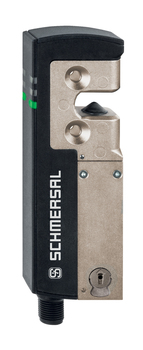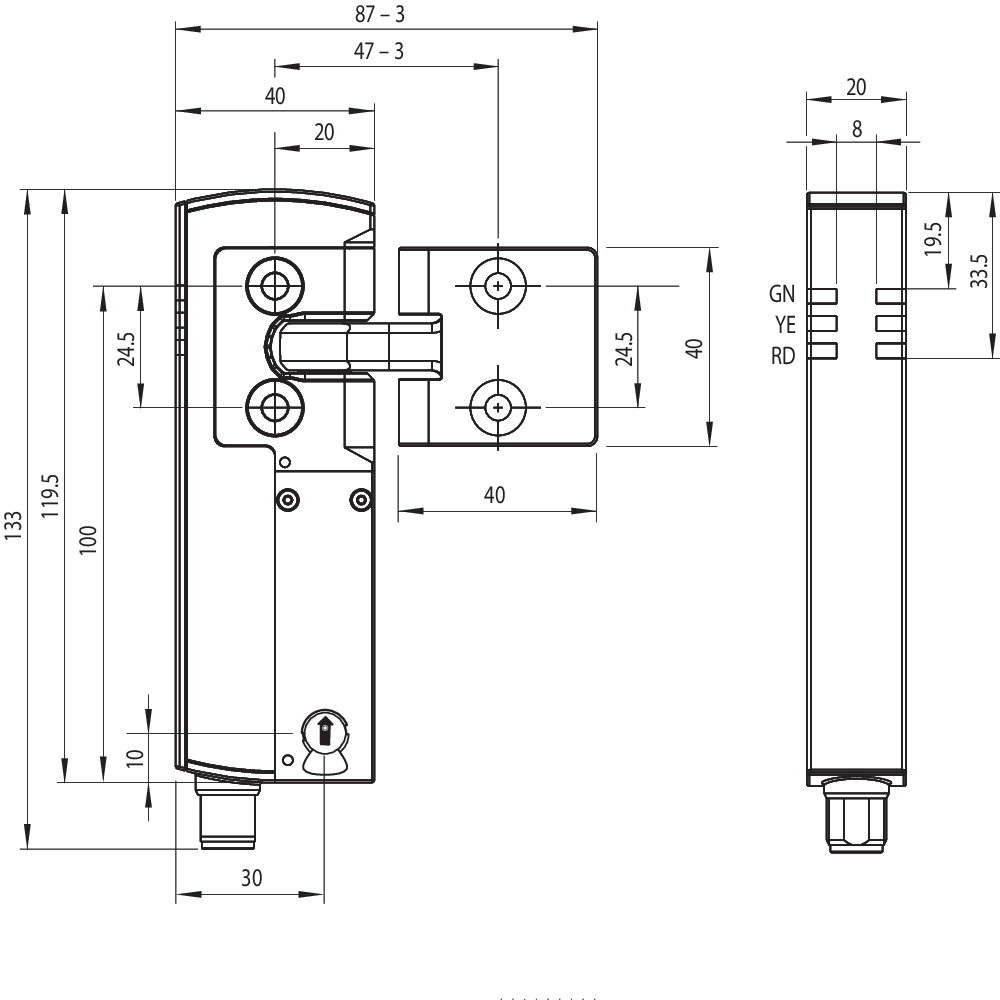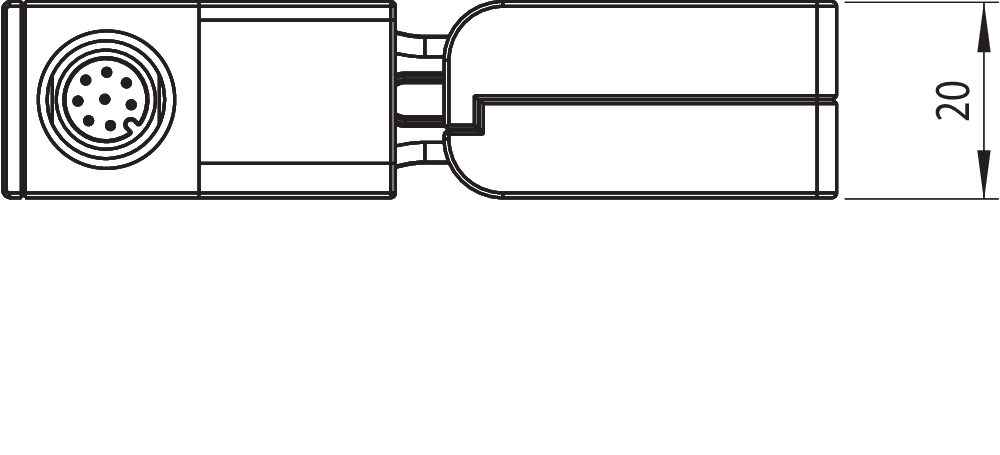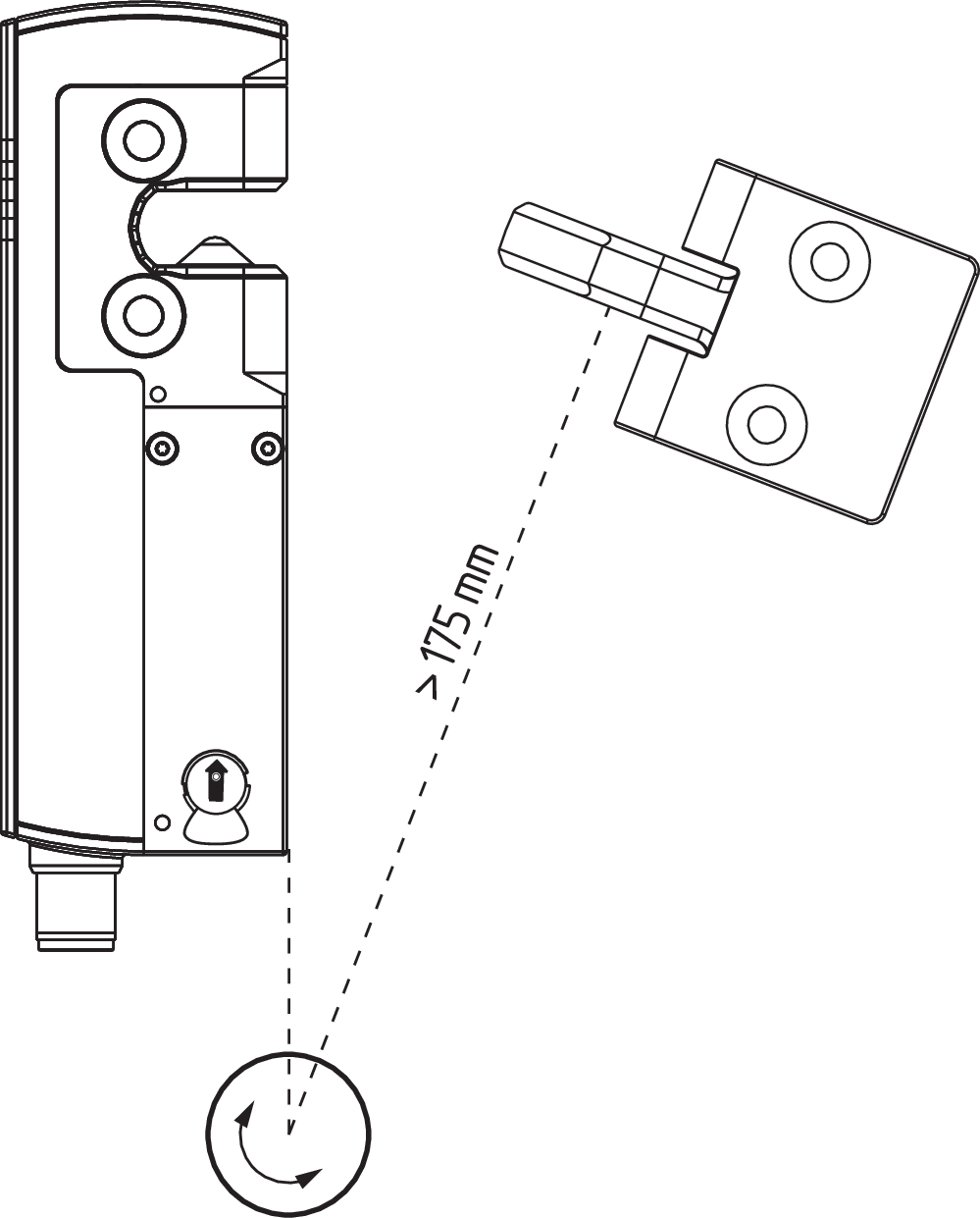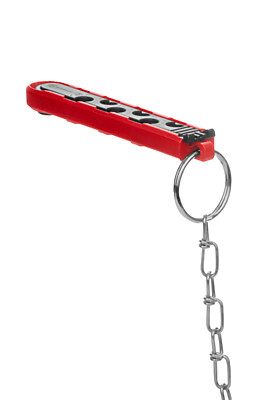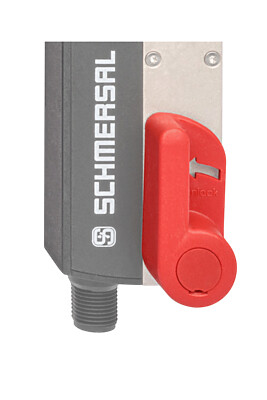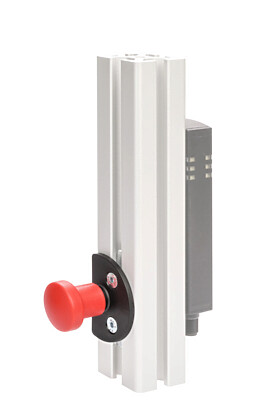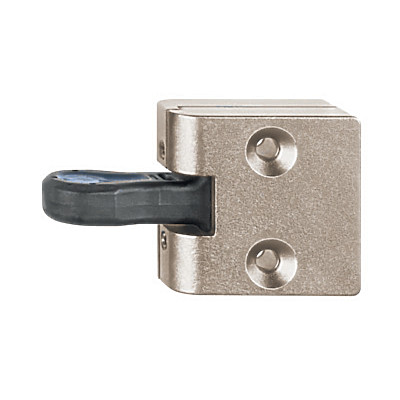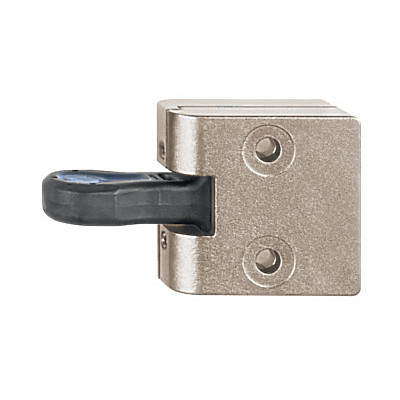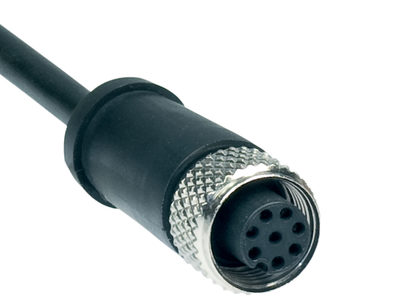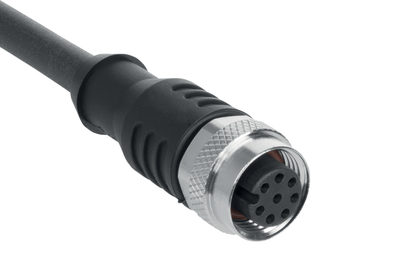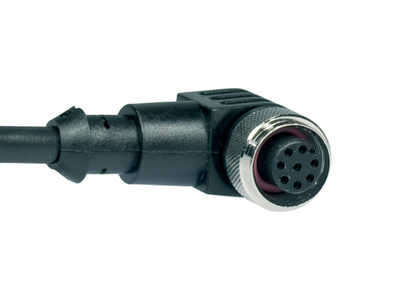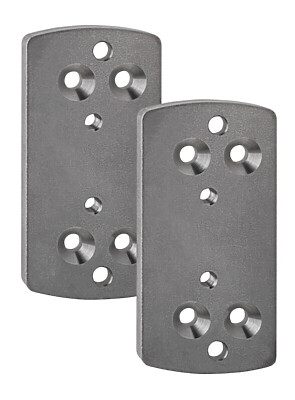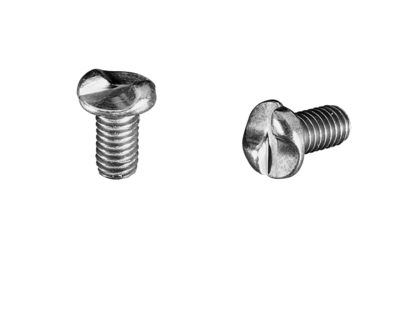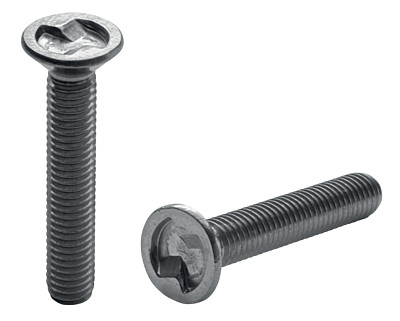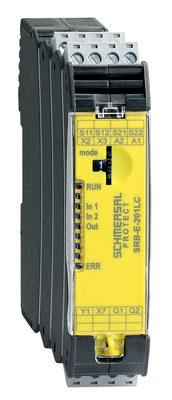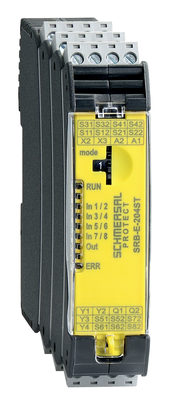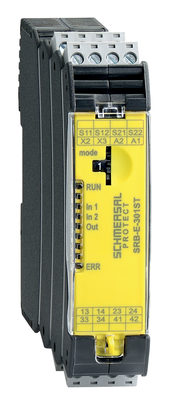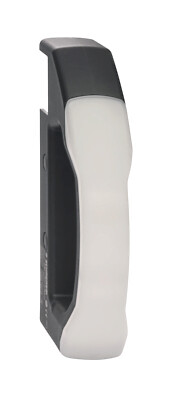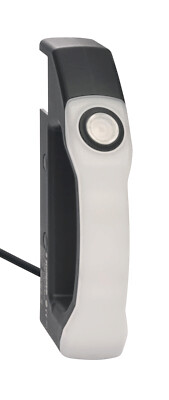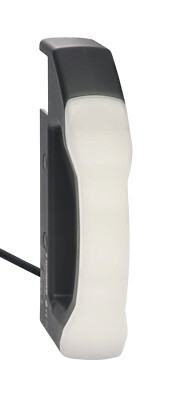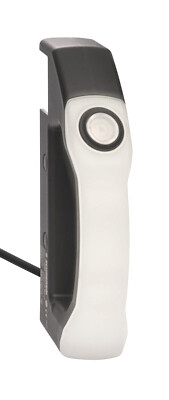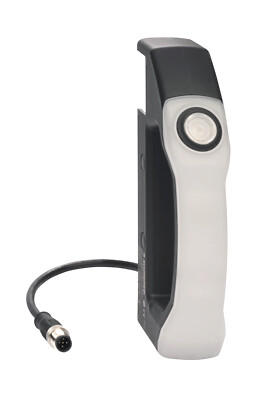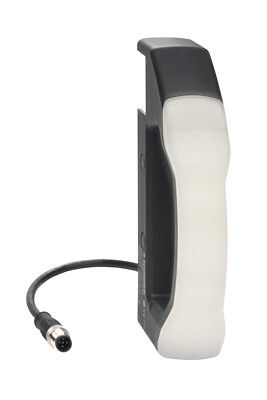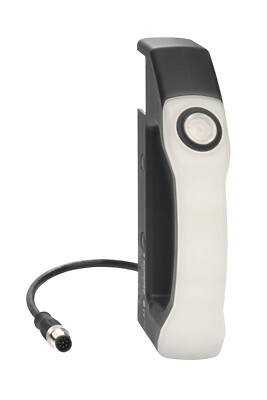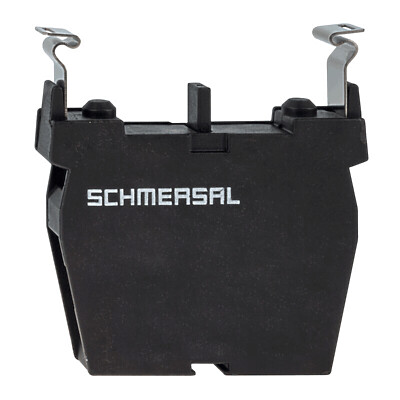AZM40B-I2-ST-1P2P-DU
AZM40B-I2-ST-1P2P-DU
- formato plano, pequeño
- 119,5 mm x 40 mm x 20 mm
- Elevada fuerza de bloqueo 2000 N
- Fuerza de retención 40 N
- Protección contra la neutralización/manipulación según las necesidades mediante tecnología RFID
- Versión codificada individualmente con nivel de codificación "alto" según ISO 14119
- Sólo una versión para puertas giratorias y correderas
- El actuador se puede aproximar al dispositivo de bloqueo de forma continua dentro de un ángulo de 180º.
- Montaje simétrico, atornillable a ambos lados
Detalles de Pedidos
| Nota (disponibilidad) |
No más disponible! |
| Descripción del tipo de producto |
AZM40B-I2-ST-1P2P-DU |
| Número de artículo (Nº artículo) |
103044785 |
| EAN (European Article Number) |
4030661563725 |
| eCl@ss number, version 12.0 |
27-27-26-03 |
| eCl@ss number, version 11.0 |
27-27-26-03 |
| Número eCl@ss, versión 9.0 |
27-27-26-03 |
| ETIM number, version 7.0 |
EC002593 |
| ETIM number, version 6.0 |
EC002593 |
Aprobaciones - Normas
|
TÜV cULus FCC IC UKCA ANATEL |
Propiedades Globales
| Normas |
EN ISO 13849-1 EN ISO 14119 EN IEC 60947-5-3 EN IEC 61508 |
| Información general |
Codificación individual, aprendizajes multiples |
| Nivel de codificación según EN ISO 14119 |
alta |
| Principio activo |
RFID |
| Frequency band RFID |
125 kHz |
| Transmitter output RFID, maximum |
-6 dB/m |
| Material de la caja |
Metal ligero fundido a presión y plástico (termoplástico reforzado con fibra de vidrio) |
| Tiempo de reacción, máximo |
100 ms |
| Tiempo de riesgo, máxima |
200 ms |
| Tiempo de reacción de la entrada, máximo |
1,5 ms |
| Peso bruto |
301 g |
Datos generales - Características
| Monitorización del actuador |
Sí |
| Retención |
Sí |
| Rearme/rearranque manual |
Sí |
| Detección de cortocircuito |
Sí |
| Detección de cortocircuitos entre hilos |
Sí |
| Conexión en serie |
Sí |
| Funciones de seguridad |
Sí |
| Indicador integrado, estado |
Sí |
| Cantidad de contactos de seguridad |
2 |
Certificación de seguridad
| Normas |
EN ISO 13849-1 EN IEC 61508 |
Certificación de seguridad - Función de bloqueo
| Nivel de prestaciones (PL) hasta |
e |
| Categoría de control |
4 |
| Valor PHF |
1,10 x 10⁻⁹ /h |
| Valor de PFD |
8,90 x 10⁻⁵ |
| Safety Integrity Level (SIL), adecuado para aplicaciones en |
3 |
| Vida útil |
20 Año(s) |
Datos mecánicos
| Principio de bloqueo |
bi-estable |
| Mechanical life, locking cycles |
1.000.000 Maniobras |
| Mechanical life, actuator cycles |
500.000 Maniobras |
| Nota (vida mecánica) |
from device version V2 (V1 = 200.000 actuator cycles) |
| Fuerza de bloqueo FZh según EN ISO 14119 |
2.000 N |
| Fuerza de bloqueo Fmax, máxima |
2.600 N |
| Fuerza de retención |
40 N |
| Indicación (Fuerza de retención) |
+/- 25% |
| Velocidad de accionamiento, máxima |
0,5 m/s |
| Montaje |
Agujeros de montaje avellanado cónico |
| Ejecución de los tornillos de fijación |
2x M5 |
| Tightening torque of the fixing screws, minimum |
4 Nm |
| Par de apriete de los tornillos de fijación, máximo |
6 Nm |
| Indicación |
Observe the maximum tightening torque of the fixing screws used. |
Mechanical data - Switching distances
| Distancia de conmutación asegurada "ON" Sao |
1 mm |
| Distancia de conmutación asegurada "OFF" Sar |
8 mm |
| Nota (distancia de conmutación) |
All switching distances in accordance EN IEC 60947-5-3 |
Datos mecánicos - Conexionado
| Length of sensor chain, maximum |
200 m |
| Note (length of the sensor chain) |
Cable length and cross-section change the voltage drop dependiing on the output current |
| Note (series-wiring) |
Unlimited number of devices, oberserve external line fusing, max. 31 devices in case of serial diagnostic SD |
| Conexión conector |
Conector M12, 8-polos, codificados A |
Datos mecánicos - Dimensiones
| Longitud del sensor |
119,5 mm |
| Anchura del sensor |
40 mm |
| Altura del sensor |
20 mm |
Condiciones ambientales
| Protección |
IP66 IP67 IP69 |
| Temperatura ambiente |
-20 ... +55 °C |
| Temperatura de almacén y de transporte |
-40 ... +85 °C |
| Humedad relativa, máxima |
93 % |
| Nota (humedad relativa) |
sin condensación sin escarcha |
| Resistencia a vibraciones |
10…55 Hz, amplitud 1 mm |
| Resistencia al impacto |
30 g / 11 ms |
| Grado de protección. |
III |
| Altura de montaje snm permitida, máximo |
2.000 m |
Condiciones ambientales - Valores de aislamiento
| Tensión de aislamiento nominal Ui |
32 VDC |
| Resistencia al impulso de sobretensión Uimp |
0,8 kV |
| Categoría de sobre-tensión |
III |
| Grado de polución |
3 |
Datos eléctricos
| Tensión operativa |
24 VDC -15 % / +10 % |
| No-load supply current I0, typical |
100 mA |
| Current consumption magnet at switching moment, peak |
600 mA / 100 ms |
| Tensión nominal operativa |
24 VDC |
| Corriente nominal operativa |
1.200 mA |
| Corriente de cortocircuito |
100 A |
| External wire and device fuse rating |
2 A gG |
| Retardo de disponibilidad, máxima |
4.000 ms |
| Frecuencia de conmutación, máxima |
0,25 Hz |
| Categoría de utilización DC-12 |
24 VDC / 0,05 A |
| Fusibles eléctricos, máximo |
2 A |
Datos eléctricos - Control del solenoide IN
| Denominación, control del solenoide |
IN |
| Umbrales de conmutación |
-3 V … 5 V (Low) 15 V … 30 V (High) |
| Magnet switch-on time |
100 % |
| Test pulse duration, maximum |
5 ms |
| Test pulse interval, minimum |
40 ms |
| Clasificación ZVEI CB24I, depresión |
C0 |
| Clasificación ZVEI CB24I, fuente |
C1 C2 C3 |
| Corriente operativa a 24V, Mínima |
10 mA |
| Corriente operativa a 24V, Máxima |
15 mA |
Datos eléctricos - Entradas digitales seguras
| Denominación, entradas de seguridad |
X1 y X2 |
| Umbrales de conmutación |
−3 V … 5 V (Low) 15 V … 30 V (High) |
| Corriente operativa a 24 V |
5 mA |
| Test pulse duration, maximum |
1 ms |
| Test pulse interval, minimum |
100 ms |
| Clasificación ZVEI CB24I, depresión |
C1 |
| Clasificación ZVEI CB24I, fuente |
C1 C2 C3 |
Datos eléctricos - Salidas digitales seguras
| Denominación, salidas de seguridad |
Y1 y Y2 |
| Corriente nominal operativa (salidas de seguridad) |
250 mA |
| Versión |
protegidas contra cortocircuitos, tipo p |
| Caída de tensión Ud, máxima |
2 V |
| Corriente residual Ir, máxima |
0,5 mA |
| Tensión, categoría de utilización DC-12 |
24 VDC |
| Corriente, categoría de utilización DC-12 |
0,25 A |
| Tensión, categoría de utilización DC-13 |
24 VDC |
| Corriente, categoría de utilización DC-13 |
0,25 A |
| Test pulse interval, typical |
1000 ms |
| Test pulse duration, maximum |
0,5 ms |
| Clasificación ZVEI CB24I, fuente |
C2 |
| Clasificación ZVEI CB24I, depresión |
C1 C2 |
Datos eléctricos - Salida de diagnóstico
| Denominación, salidas de diagnóstico |
OUT |
| Ejecución de los elementos de conmutación |
protegidas contra cortocircuitos, tipo p |
| Caída de tensión Ud, máxima |
2 V |
| Tensión, categoría de utilización DC-12 |
24 VDC |
| Corriente, categoría de utilización DC-12 |
0,05 A |
| Tensión, categoría de utilización DC-13 |
24 VDC |
| Corriente, categoría de utilización DC-13 |
0,05 A |
Indicación de estado
| Nota (Indicador de estado por LED) |
Estado operativo: LED amarillo Error/fallo de funcionamiento: LED rojo Tensión de alimentación: LED verde |
Asignación de contactos
| PIN 1 |
A1 Tensión de alimentación UB |
| PIN 2 |
X1 Entrada de seguridad 1 |
| PIN 3 |
A2 GND |
| PIN 4 |
Y1 Salida de seguridad 1 |
| PIN 5 |
OUT Salida de diagnóstico |
| PIN 6 |
X2 Entrada de seguridad 2 |
| PIN 7 |
Y2 Salida de seguridad 2 |
| PIN 8 |
IN Control del electroimán |
Accesorios
| Recomendación (actuador) |
AZM40-B1 |
Filtro de idiomas
Ficha técnica
Manual de instrucciones y declaración de conformidad
Certificado TÜV
Certificado UL
FCC-Zertifikat
IC-Zertifikat
Certificado UKCA
Certificado ANATEL
Folleto
SISTEMA-VDMA Biblioteca/Library
Descargar la versión actual de Adobe Reader
Foto de producto (foto individual de catálogo)
Dibujo dimensional Componente básico
Dibujo dimensional Componente básico
Ejemplo de cableado
Ejemplo de aplicación general
Video ID: Mr-Safety-AZM40
103034195 AZM40B-I2-ST-1P2P
- formato plano, pequeño
- 119,5 mm x 40 mm x 20 mm
- Elevada fuerza de bloqueo 2000 N
- Fuerza de retención 40 N
- Protección contra la neutralización/manipulación según las necesidades mediante tecnología RFID
- Versión codificada individualmente con nivel de codificación "alto" según ISO 14119
- Sólo una versión para puertas giratorias y correderas
- El actuador se puede aproximar al dispositivo de bloqueo de forma continua dentro de un ángulo de 180º.
- Montaje simétrico, atornillable a ambos lados
Contenido
- 1 Acerca de este documento
- 1.1 Función
- 1.2 A quién va dirigido el manual de instrucciones: personal experto autorizado
- 1.3 Símbolos utilizados
- 1.4 Uso previsto
- 1.5 Instrucciones de seguridad generales
- 1.6 Advertencia sobre el uso inadecuado
- 1.7 Exención de responsabilidad
- 2 Descripción del producto
- 2.1 Código de pedidos
- 2.2 Versiones especiales
- 2.3 Descripción y uso
- 2.4 Datos técnicos
- 3 Montaje
- 3.1 Instrucciones generales para el montaje
- 3.2 Rearme/rearranque manual
- 3.3 Dimensiones
- 3.4 Componentes de sistema opcionales
- 4 Conexión eléctrica
- 4.1 Instrucciones generales para la conexión eléctrica
- 4.2 Requisitos para una evaluación posterior
- 4.3 Conexionado y conectores accesorios
- 4.4 Ejemplos de conexión
- 5 Aprendizaje de los actuadores / detección de actuador
- 6 Principio activo y Funciones de diagnóstico
- 6.1 Control del solenoide
- 6.2 Funcionamiento de las salidas de seguridad
- 6.3 LED's de diagnóstico
- 6.4 Salidas de diagnóstico
- 6.5 Información de diagnóstico
- 7 Puesta en servicio y mantenimiento
- 7.1 Prueba de funcionamiento
- 7.2 Mantenimiento
- 8 Desmontaje y retirada
- 8.1 Retirada
- 8.2 Retirada
1 Acerca de este documento
1.1 Función
El presente documento ofrece la información necesaria para el montaje, la puesta en servicio, el funcionamiento seguro, así como el desmontaje del dispositivo de seguridad. El manual que viene adjunto al equipo, siempre debe conservarse en estado legible y estar accesible en todo momento.
1.2 A quién va dirigido el manual de instrucciones: personal experto autorizado
Todas las acciones descritas en este manual de instrucciones sólo deberán ser realizadas por personal experto debidamente formado y autorizado por el usuario de la máquina.
Sólo instale y ponga en servicio el equipo tras haber leído y entendido el manual de instrucciones, y conocer las normas sobre seguridad laboral y prevención de accidentes.
La selección y el montaje de los equipos así como su inclusión técnica en el sistema de control van unidos a los conocimientos cualificados de la legislación y normativa aplicable por parte del fabricante de la máquina.
1.3 Símbolos utilizados
- Información, Sugerencia, Nota: Este símbolo indica que se trata de información adicional útil.
- Atención: Si no se observa esta advertencia podrían ocasionarse fallos o errores de funcionamiento.
Advertencia: Si no se observa esta advertencia podrían ocasionarse daños personales y/o daños en la máquina.
1.4 Uso previsto
La gama de productos de Schmersal no está destinada a consumidores privados.
Los productos aquí descritos han sido desarrollados para asumir funciones relativas a la seguridad como parte de una instalación completa o una máquina individual. Es responsabilidad del fabricante de la instalación o máquina asegurar la seguridad del funcionamiento en general.
El dispositivo de seguridad sólo puede ser utilizado siguiendo las indicaciones que se presentan a continuación o para aplicaciones autorizadas por el fabricante. Encontrará más detalles sobre el ámbito de aplicación en el capítulo "Descripción del producto“.
1.5 Instrucciones de seguridad generales
Deberán cumplirse las instrucciones de seguridad incluidas en el manual de instrucciones, así como las normas nacionales relativas a la instalación, seguridad y prevención de accidentes.
- Encontrará más información técnica en los catálogos de Schmersal y/o en el catálogo online disponible en Internet en products.schmersal.com.
No se garantiza la exactitud del contenido. Nos reservamos el derecho a realizar cambios en favor del progreso técnico.
No se conocen riesgos residuales si se observan las indicaciones relativas a la seguridad, así como las instrucciones para el montaje, la puesta en servicio, el servicio y el mantenimiento.
1.6 Advertencia sobre el uso inadecuado
- El uso inadecuado o distinto al previsto, así como cualquier neutralización/manipulación pueden ocasionar daños personales o a las máquinas/partes de la instalación al utilizar el interruptor.
1.7 Exención de responsabilidad
El fabricante no se hace responsable de daños y fallos de funcionamiento ocasionados por errores de montaje o la no observación de este manual de instrucciones. Tampoco asume responsabilidad alguna por daños derivados del uso de piezas de recambio o accesorios no autorizados.
Por motivos de seguridad está prohibido realizar cualquier tipo de reparación, reforma y modificación arbitraria, que anula la responsabilidad del fabricante sobre daños resultantes de ello.
2 Descripción del producto
2.1 Código de pedidos
| Descripción del tipo de producto: AZM40(1)-(2)-ST-1P2P-(3) |
| (1) | |
| Z | Monitorización del bloqueo > |
| B | Monitorización del actuador |
| (2) | |
| sin | Codificación estándar |
| I1 | Codificación individual |
| I2 | Codificación individual, aprendizajes multiples |
| (3) | |
| sin | Taladros avellanados para tornillos de cabeza avellanada (estándar) |
| PH | Caja plana para tornillos sobresalientes |
| Actuador | AZM 40-B1 |
| AZM40-B1-PH |
2.2 Versiones especiales
Para versiones especiales que no figuran en el código de pedidos, los datos mencionados y los que se mencionan a continuación son de aplicación en la medida en que correspondan a la versión fabricada de serie.
2.3 Descripción y uso
El interruptor de seguridad que funciona sin contacto, ha sido diseñado para ser utilizado en circuitos eléctricos de seguridad y sirve para la monitorización de la posición de resguardos de seguridad móviles.
El sistema de bloqueo AZM40 es adecuado para el montaje en sistemas de perfiles de 40 mm, así como en resguardos giratorios y correderos, gracias a la flexibilidad angular de 180º del actuador. LED's visibles desde tres lados
- Los interruptores de seguridad están clasificados como dispositivos de bloqueo de tipo 4 según la norma EN ISO 14119. Las versiones con codificación individual se consideran como altamente codificadas.
Las distintas variantes del equipo se pueden utilizar como interruptores de seguridad con función de bloqueo o como bloqueo de seguridad.
- Si el análisis de riesgos requiere un dispositivo de bloqueo con monitorización segura, deberá utilizarse una variante con monitorización de bloqueo, marcada en el código de pedidos con el símbolo >.
La variante con actuador monitorizado (B) es un interruptor de seguridad con una función de bloqueo para la protección de procesos.
La función de seguridad es desconectar de forma segura las salidas de seguridad al desbloquear o al abrir el resguardo de seguridad y mantener esa desconexión de forma segura mientras el resguardo de seguridad está abierto o desbloqueado.
El dispositivo de bloqueo por solenoide AZM40 es un sistema biestable, lo que significa que en caso de fallo de suministro de corriente, el dispositivo mantendrá el estado en el que se encuentra en ese momento.
Conexión en serie
Es posible realizar una conexión en serie. En una conexión en serie, el tiempo de riesgo no cambia y el tiempo de reacción se incrementa en la suma del tiempo de reacción de las entradas por dispositivo adicional, como indicado en los datos técnicos. El número de equipos solamente está limitado por las pérdidas de conducción y la protección de cables externa, según los datos técnicos.
- El usuario deberá realizar la evaluación y dimensionado de la cadena de seguridad siguiendo las indicaciones de las normas y disposiciones relevantes y según el nivel de seguridad necesario. Si en la misma función de seguridad hay involucrados varios sensores de seguridad, deberán sumarse los valores PFH de los distintos componentes.
- El concepto general del control en el que se incorpore el componente de seguridad deberá validarse según las normas relevantes.
2.4 Datos técnicos
Aprobaciones - Normas
|
TÜV cULus FCC IC UKCA ANATEL |
Propiedades Globales
| Normas |
EN ISO 13849-1 EN ISO 14119 EN IEC 60947-5-3 EN IEC 61508 |
| Información general |
Codificación individual, aprendizajes multiples |
| Nivel de codificación según EN ISO 14119 |
alta |
| Principio activo |
RFID |
| Frequency band RFID |
125 kHz |
| Transmitter output RFID, maximum |
-6 dB/m |
| Material de la caja |
Metal ligero fundido a presión y plástico (termoplástico reforzado con fibra de vidrio) |
| Tiempo de reacción, máximo |
100 ms |
| Tiempo de riesgo, máxima |
200 ms |
| Tiempo de reacción de la entrada, máximo |
1,5 ms |
| Peso bruto |
301 g |
Datos generales - Características
| Monitorización del actuador |
Sí |
| Retención |
Sí |
| Rearme/rearranque manual |
Sí |
| Detección de cortocircuito |
Sí |
| Detección de cortocircuitos entre hilos |
Sí |
| Conexión en serie |
Sí |
| Funciones de seguridad |
Sí |
| Indicador integrado, estado |
Sí |
| Cantidad de contactos de seguridad |
2 |
Certificación de seguridad
| Normas |
EN ISO 13849-1 EN IEC 61508 |
Certificación de seguridad - Función de bloqueo
| Nivel de prestaciones (PL) hasta |
e |
| Categoría de control |
4 |
| Valor PHF |
1,10 x 10⁻⁹ /h |
| Valor de PFD |
8,90 x 10⁻⁵ |
| Safety Integrity Level (SIL), adecuado para aplicaciones en |
3 |
| Vida útil |
20 Año(s) |
Datos mecánicos
| Principio de bloqueo |
bi-estable |
| Mechanical life, locking cycles |
1.000.000 Maniobras |
| Mechanical life, actuator cycles |
500.000 Maniobras |
| Nota (vida mecánica) |
from device version V2 (V1 = 200.000 actuator cycles) |
| Fuerza de bloqueo FZh según EN ISO 14119 |
2.000 N |
| Fuerza de bloqueo Fmax, máxima |
2.600 N |
| Fuerza de retención |
40 N |
| Indicación (Fuerza de retención) |
+/- 25% |
| Velocidad de accionamiento, máxima |
0,5 m/s |
| Montaje |
Agujeros de montaje avellanado cónico |
| Ejecución de los tornillos de fijación |
2x M5 |
| Tightening torque of the fixing screws, minimum |
4 Nm |
| Par de apriete de los tornillos de fijación, máximo |
6 Nm |
| Indicación |
Observe the maximum tightening torque of the fixing screws used. |
Mechanical data - Switching distances
| Distancia de conmutación asegurada "ON" Sao |
1 mm |
| Distancia de conmutación asegurada "OFF" Sar |
8 mm |
| Nota (distancia de conmutación) |
All switching distances in accordance EN IEC 60947-5-3 |
Datos mecánicos - Conexionado
| Length of sensor chain, maximum |
200 m |
| Note (length of the sensor chain) |
Cable length and cross-section change the voltage drop dependiing on the output current |
| Note (series-wiring) |
Unlimited number of devices, oberserve external line fusing, max. 31 devices in case of serial diagnostic SD |
| Conexión conector |
Conector M12, 8-polos, codificados A |
Datos mecánicos - Dimensiones
| Longitud del sensor |
119,5 mm |
| Anchura del sensor |
40 mm |
| Altura del sensor |
20 mm |
Condiciones ambientales
| Protección |
IP66 IP67 IP69 |
| Temperatura ambiente |
-20 ... +55 °C |
| Temperatura de almacén y de transporte |
-40 ... +85 °C |
| Humedad relativa, máxima |
93 % |
| Nota (humedad relativa) |
sin condensación sin escarcha |
| Resistencia a vibraciones |
10…55 Hz, amplitud 1 mm |
| Resistencia al impacto |
30 g / 11 ms |
| Grado de protección. |
III |
| Altura de montaje snm permitida, máximo |
2.000 m |
Condiciones ambientales - Valores de aislamiento
| Tensión de aislamiento nominal Ui |
32 VDC |
| Resistencia al impulso de sobretensión Uimp |
0,8 kV |
| Categoría de sobre-tensión |
III |
| Grado de polución |
3 |
Datos eléctricos
| Tensión operativa |
24 VDC -15 % / +10 % |
| No-load supply current I0, typical |
100 mA |
| Current consumption magnet at switching moment, peak |
600 mA / 100 ms |
| Tensión nominal operativa |
24 VDC |
| Corriente nominal operativa |
1.200 mA |
| Corriente de cortocircuito |
100 A |
| External wire and device fuse rating |
2 A gG |
| Retardo de disponibilidad, máxima |
4.000 ms |
| Frecuencia de conmutación, máxima |
0,25 Hz |
| Categoría de utilización DC-12 |
24 VDC / 0,05 A |
| Fusibles eléctricos, máximo |
2 A |
Datos eléctricos - Control del solenoide IN
| Denominación, control del solenoide |
IN |
| Umbrales de conmutación |
-3 V … 5 V (Low) 15 V … 30 V (High) |
| Magnet switch-on time |
100 % |
| Test pulse duration, maximum |
5 ms |
| Test pulse interval, minimum |
40 ms |
| Clasificación ZVEI CB24I, depresión |
C0 |
| Clasificación ZVEI CB24I, fuente |
C1 C2 C3 |
| Corriente operativa a 24V, Mínima |
10 mA |
| Corriente operativa a 24V, Máxima |
15 mA |
Datos eléctricos - Entradas digitales seguras
| Denominación, entradas de seguridad |
X1 y X2 |
| Umbrales de conmutación |
−3 V … 5 V (Low) 15 V … 30 V (High) |
| Corriente operativa a 24 V |
5 mA |
| Test pulse duration, maximum |
1 ms |
| Test pulse interval, minimum |
100 ms |
| Clasificación ZVEI CB24I, depresión |
C1 |
| Clasificación ZVEI CB24I, fuente |
C1 C2 C3 |
Datos eléctricos - Salidas digitales seguras
| Denominación, salidas de seguridad |
Y1 y Y2 |
| Corriente nominal operativa (salidas de seguridad) |
250 mA |
| Versión |
protegidas contra cortocircuitos, tipo p |
| Caída de tensión Ud, máxima |
2 V |
| Corriente residual Ir, máxima |
0,5 mA |
| Tensión, categoría de utilización DC-12 |
24 VDC |
| Corriente, categoría de utilización DC-12 |
0,25 A |
| Tensión, categoría de utilización DC-13 |
24 VDC |
| Corriente, categoría de utilización DC-13 |
0,25 A |
| Test pulse interval, typical |
1000 ms |
| Test pulse duration, maximum |
0,5 ms |
| Clasificación ZVEI CB24I, fuente |
C2 |
| Clasificación ZVEI CB24I, depresión |
C1 C2 |
Datos eléctricos - Salida de diagnóstico
| Denominación, salidas de diagnóstico |
OUT |
| Ejecución de los elementos de conmutación |
protegidas contra cortocircuitos, tipo p |
| Caída de tensión Ud, máxima |
2 V |
| Tensión, categoría de utilización DC-12 |
24 VDC |
| Corriente, categoría de utilización DC-12 |
0,05 A |
| Tensión, categoría de utilización DC-13 |
24 VDC |
| Corriente, categoría de utilización DC-13 |
0,05 A |
Indicación de estado
| Nota (Indicador de estado por LED) |
Estado operativo: LED amarillo Error/fallo de funcionamiento: LED rojo Tensión de alimentación: LED verde |
Asignación de contactos
| PIN 1 |
A1 Tensión de alimentación UB |
| PIN 2 |
X1 Entrada de seguridad 1 |
| PIN 3 |
A2 GND |
| PIN 4 |
Y1 Salida de seguridad 1 |
| PIN 5 |
OUT Salida de diagnóstico |
| PIN 6 |
X2 Entrada de seguridad 2 |
| PIN 7 |
Y2 Salida de seguridad 2 |
| PIN 8 |
IN Control del electroimán |
Notas sobre la certificación de seguridad
- La certificación de seguridad de la función de bloqueo sólo es válida para equipos estándar con función de bloqueo monitorizada AZM40Z-…-1P2P-… (véase código de pedidos)
- El control del dispositivo de bloqueo debe compararse de forma externa con la habilitación OSSD. Si aparece una desconexión por desbloqueo no intencionado, el diagnóstico externo lo descubrirá.
- La certificación de seguridad de la función de bloqueo se refiere al componente "dispositivo de seguridad AZM" dentro de la instalación completa.
El cliente deberá tomar medidas adicionales, como por ejemplo un control seguro y un cableado seguro, con el fin de excluir posibles fallos.
Al aparecer un fallo que puede tener como consecuencia el desbloqueo de la función de bloqueo, el dispositivo de bloqueo de seguridad lo detecta y las salidas de seguridad Y1/Y2 se desconectan de manera segura. Por la aparición de un fallo de este tipo el dispositivo de bloqueo de seguridad podría abrirse de inmediato y una única vez antes de alcanzar el estado seguro de la máquina. El comportamiento de sistema de categoría 2 permite que entre las pruebas, la aparición de un error pueda tener como consecuencia la pérdida de la función de seguridad y que la pérdida de la función de seguridad sea reconocida por la prueba.
FCC/IC - Nota
Este equipo cumple con la Parte 15 de las disposiciones FCC y contiene emisores/receptores libres de licencia que son conformes con las normas RSS libres de licencia de ISED (Innovation, Science and Economic Development) Canadá.
La operación está sujeta a las siguientes dos condiciones:
(1) Este equipo no debe generar señales parásitas dañinas, y
(2) Este equipo debe ser capaz de tolerar señales parásitas. Entre estas señales se encuentran también señales parásitas que pueden tener como consecuencia un modo de función no deseado del equipo.
En funcionamiento con una distancia mínima de 100 mm, este equipo cumple con los valores límite para la estimulación nerviosa (ISED SPR-002). Toda modificación o adaptación que no haya sido autorizada explícitamente por K.A. Schmersal GmbH & Co. KG puede tener como consecuencia que el usuario pierda la autorización para el uso del equipo.
El emisor/receptor libre de licencia incluido en este equipo cumple con los requisitos aplicables a equipos de radio sin licencia por la "Radio Standards Specifications" de la autoridad Innovation, Science and Economic Development Canada (ISED). El servicio está permitido si se cumplen las siguientes condiciones:
(1) El equipo no debe generar interferencias.
(2) El equipo debe ser resistente a las interferencias de radio, incluso si éstas pudiesen influir en su funcionamiento.
Este equipo cumple con los requisitos relativos a los valores límite de exposición para la estimulación nerviosa (ISED CNR-102) en procesos con una distancia mínima de 100 mm.
En el caso de modificaciones o transformaciones, no autorizadas expresamente por K.A. Schmersal GmbH & Co. KG, la autorización para el uso por parte del usuario podría quedar sin efecto.
 20941-22-14519 | Este equipamento nao tem direito àprotecao contra interferência prejudicial e nao pode causar interferencia em sistemas devidamente autorizados. Para maiores informacores consultar: www.gov.br/anatel |
3 Montaje
3.1 Instrucciones generales para el montaje
- Rogamos observar las instrucciones de las normas EN ISO 12100, EN ISO 14119 y EN ISO 14120.
La posición de montaje es libre.
No está permitido utilizar el dispositivo de bloqueo por solenoide como tope.
Es necesario retirar la protección para el transporte.

Para la fijación del dispositivo de seguridad con bloqueo y del actuador, se dispone de dos agujeros de sujeción para tornillos M5.
- Los tornillos M5 deben corresponder como mínimo a la clase de resistencia 8.8 o, si son de acero inoxidable, a la clase de resistencia 80, respectivamente. El par de apriete de los tornillos M5 es de 4 ... 6 Nm, el par de apriete máximo depende de los tornillos de sujeción utilizados.
- El dispositivo de bloqueo por solenoide se engrasa por si mismo. La grasa en el perno de bloqueo y en el hueco del actuador no se debe eliminar.
- Debe evitarse la acumulación de suciedad de grano fino en la zona del perno. Para evitar esta posibilidad, no deberá montarse el dispositivo en una posición, en la que el perno entre de abajo hacia arriba.
El actuador se deberá montar de tal manera que quede protegido de daños por influencias externas.
- El uso con temperaturas negativas, solo es posible si el frío es seco. El cliente deberá tener en cuenta esta condición durante el montaje del interruptor de seguridad.
- El dispositivo de bloqueo con perno de bloqueo (a) y el actuador con marca triangular (B) deben montarse en la misma dirección de montaje.

Dirección de accionamiento
El actuador se puede insertar de manera continua dentro de un ángulo de 180º.

- El actuador debe fijarse de manera definitiva al resguardo de seguridad (mediante tornillos de uso único, pegado, taladrado de cabezas de tornillo, enclavijado) y de forma que no se pueda desplazar.
Desalineamiento entre actuador y dispositivo de bloqueo permitido
| Ángulo de inclinación | Ángulo de giro |
|---|---|
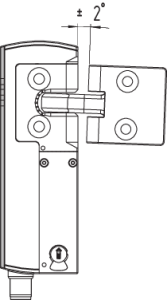 |  |
| Direcciones de accionamiento y distancias de conmutacion | ||
|---|---|---|
| El AZM40 es capaz de funcionar dentro de los siguientes límites de tolerancia: | ||
| Eje X | - 3 mm |  |
| Eje Y | ± 1 mm | |
| Eje Z | ± 1,5 mm (actuador en posición central) | |
Ajuste
Ambos tornillos hexagonales M4 permiten un ajuste de la lengüeta del actuador en dirección X con ayuda de una llave hexagonal SW 2 mm.
Ajuste a través de tornillos hexagonales M4

- Los tornillos hexagonales no deben extraerse completamente.
Para evitar cualquier variación del sistema y la reducción de las distancias de detección, se recomienda atender las siguientes recomendaciones:
- La existencia de piezas de metal y campos magnéticos cerca del actuador y del dispositivo de bloqueo por solenoide puede influir sobre la distancia de conmutación y tener como consecuencia fallos de funcionamiento
- Evitar todo tipo de virutas metálicas.
Distancia mínima entre dos dispositivos de bloqueo AZM40 (en mm)

3.2 Rearme/rearranque manual
Para la colocación y el mantenimiento se puede desbloquear el dispositivo de bloqueo estando libre de tensión. El dispositivo de bloqueo se desbloquea girando el rearme manual en sentido contrario a las agujas del reloj. Sólo después de girar nuevamente el rearme manual a su posición inicial se vuelve a la función normal.
- No girar el rearme manual más alla del tope.
Para accionar el rearme manual es necesario utilizar una herramienta (recomendación: destornillador plano 0,8 x 4 … 4,5 mm).
Después de la puesta en servicio, el desbloqueo manual debe estar protegido contra un accionamiento involuntario, por ejemplo mediante el uso del precinto adjunto.
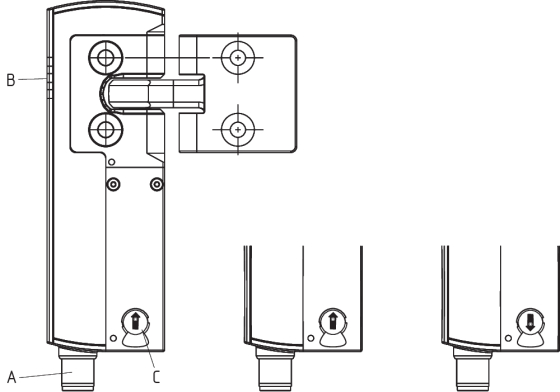
| Leyenda | |
|---|---|
| A | Conector M12, 8-polos |
| B | Indicadores por LED |
| C | Desbloqueo manual (ambos lados) |
 | Dispositivo de bloqueo por solenoide listo para funcionar |
 | Dispositivo de bloqueo por solenoide no está listo para funcionar |
3.3 Dimensiones
Todas las medidas en mm.

3.4 Componentes de sistema opcionales
Kit para el retroequipamiento de bloqueo de emergencia (anti-pánico)/Desbloqueo de escape
El kit para el retroequipamiento sirve para la ampliación posterior de las funciones del dispositivo de seguridad de bloqueo por solenoide.
| Denominación | Nº artículo | |
|---|---|---|
| Dispositivo de desbloqueo de escape | ACC-AZM40-LEV-T | 103054265 |
| Desbloqueo de emergencia | ACC-AZM40-LEV-N | 103054268 |
| Desbloqueo de escape con botón pulsador – para perfiles de 40 mm – para perfiles hasta 170 mm | ACC-AZM40-PT-T-40MM ACC-AZM40-PT-T-170MM | 103054271 103054273 |
| Desbloqueo de emergencia (anti-pánico) con botón pulsador – para perfiles de 40 mm – para perfiles hasta 170 mm | ACC-AZM40-PT-N-40MM ACC-AZM40-PT-N-170MM | 103054275 103054277 |
| ACC-AZM40-LEV | ACC-AZM40-PT |
|---|---|
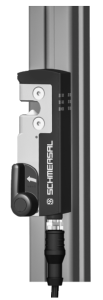 | 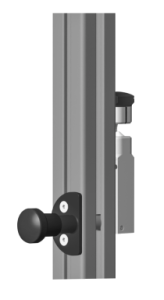 |
| Denominación | Nº artículo | |
|---|---|---|
| Pieza de bloqueo (consignación) | SZ40 | 103053182 |
| Grupo de montaje universal para sistemas de perfil de 20, 30, 45, 50 y 60 mm, 2 unidades. | MP-AZM40 | 103045324 |
| Tornillos de un solo uso M5 x 25, cabeza plana, 2 unidades | ACC-NRS-M5X25-FHS-2PCS | 103045415 |
| Tornillos de un solo uso M5 x 25, cabeza avellanada, 2 unidades | ACC-NRS-M5X25-CSS-2PCS | 103045416 |
| SZ40 | MP-AZM40 |
|---|---|
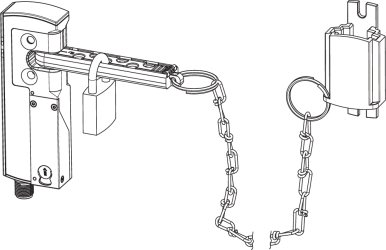 | 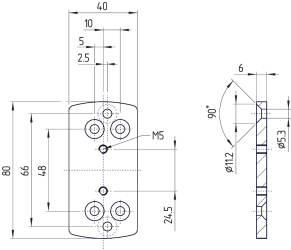 |
4 Conexión eléctrica
4.1 Instrucciones generales para la conexión eléctrica
- La conexión eléctrica sólo debe realizarse estando el dispositivo libre de tensión y por personal experto autorizado.
Las entradas de tensión A1, X1, X2 e IN deben estar protegidas contra sobretensión. Deben utilizarse fuentes de alimentación PELV según EN 60204-1.
En la instalación debe preverse la correspondiente protección de cables y fusible del equipo.
Las salidas de seguridad se pueden conectar directamente a la parte relativa a la seguridad del circuito de control.
4.2 Requisitos para una evaluación posterior
Entrada de seguridad de dos canales, adecuada para 2 salidas de semiconductor tipo p (OSSD)
- Configuración del PLC de seguridad
Al conectar el interruptor de seguridad a relés de seguridad electrónicos recomendamos configurar un tiempo de discrepancia de 100 ms. Las entradas de seguridad del relé deben ser capaces de ocultar un impulso de prueba de aprox. 1 ms. No es necesario una detección de cortocircuitos entre hilos y, dado el caso, deberá desconectarse.
- Encontrará información para la selección de los relés de seguridad adecuados en los catálogos de Schmersal, así como en el catálogo online disponible en products.schmersal.com.
4.3 Conexionado y conectores accesorios
| Función dispositivo de seguridad | Asignación de los PIN's del conector empotrado | Código de color de los conectores Schmersal | Posible Código de colores de otros conectores enchufables habituales en el mercado según EN 60947-5-2 | |||
|---|---|---|---|---|---|---|
| con salida de diagnóstico convencional |  | P67 / IP69 según DIN 47100 | IP69 (PVC) | |||
| A1 | Ue | 1 | WH (blanco) | BN (marrón) | BN (marrón) | |
| X1 | Entrada de seguridad 1 | 2 | BN (marrón) | WH (blanco) | WH (blanco) | |
| A2 | GND | 3 | GN (verde) | BU (azul) | BU (azul) | |
| Y1 | Salida de seguridad 1 | 4 | YE (amarillo) | BK (negro) | BK (negro) | |
| OUT | Salida de diagnóstico | 5 | GY (gris) | GY (gris) | GY (gris) | |
| X2 | Entrada de seguridad 2 | 6 | PK (rosa) | VT (violeta) | PK (rosa) | |
| Y2 | Salida de seguridad 2 | 7 | BU (azul) | RD (rojo) | VT (violeta) | |
| IN | Control del solenoide | 8 | RD (rojo) | PK (rosa) | OR (naranja) | |
Accesorios cables de conexión
| Cables de conexión con conector (hembra) M12, 8-polos – 8 x 0,25 mm², IP67 / IP69 | |
|---|---|
| Longitud del cable | Nº artículo |
| 2,5 m | 103011415 |
| 5,0 m | 103007358 |
| 10,0 m | 103007359 |
| 15,0 m | 103011414 |
| Cables de conexión (PVC) con conector hembra M12, 8-polos - 8 x 0,21 mm², IP69 | |
|---|---|
| Longitud del cable | Nº artículo |
| 5,0 m | 101210560 |
| 5,0 m, acodado | 101210561 |
| 10,0 m | 103001389 |
| 15,0 m | 103014823 |
Bajo solicitud hay disponibles más versiones en distintas longitudes y salida de cables acodada
- Si se utiliza un conector angular, éste deberá estar orientado en paralelo a la superficie de sujeción, indicando hacia el lado contrario al actuador.
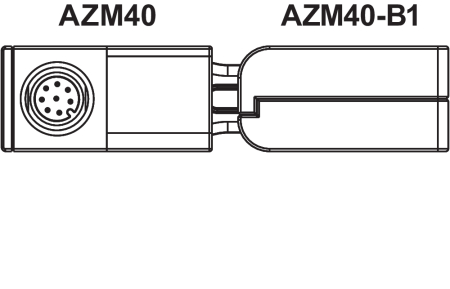
4.4 Ejemplos de conexión
Los ejemplos de aplicación mostrados son propuestas por lo que el usuario deberá comprobar que las conexiones sean realmente adecuadas para cada caso individual.
Ejemplo de conexión: Conexión en serie del AZM40
La tensión de alimentación se conecta a ambas entradas de seguridad a través del último interruptor de seguridad de la cadena (visto desde el relé de seguridad). Las salidas de seguridad del primer interruptor de seguridad son conectadas al relé de seguridad.

Y1 e Y2 = Salidas de seguridad → Relé de seguridad
5 Aprendizaje de los actuadores / detección de actuador
Los dispositivos de bloqueo con codificación estándar están listos para funcionar en el momento de su entrega.
Los dispositivos de bloqueo y actuadores con codificación individual deben aprendizados entre ellos de la siguiente manera:
- Desconectar el dispositivo de bloqueo y aplicarle tensión nuevamente.
- Llevar el actuador a la zona de detección. El procedimiento de aprendizaje se indica en el dispositivo de bloqueo, el LED verde se apaga, el LED rojo se enciende y el LED amarillo parpadea (1 Hz).
- Tras 10 segundos el equipo solicita mediante breves impulsos parpadeantes (3 Hz) la desconexión de la tensión operativa del dispositivo de bloqueo. (Si no se desconecta en un plazo de 5 minutos, el dispositivo de bloqueo interrumpe el proceso de aprendizaje y comunica la existencia de un actuador equivocado parpadeando 5 veces en color rojo.)
- Tras la siguiente conexión de la tensión operativa el actuador debe programarse nuevamente para activar el código de actuador que se ha aprendido/programado. De esta manera el código activado se guarda definitivamente.
En la opción de pedido "I1" la asignación de sensor de seguridad y actuador así definida es irreversible.
En la opción de pedido -I2 el proceso de aprendizaje de un nuevo actuador se puede repetir ilimitadamente. Al realizar el aprendizaje de un nuevo actuador, el código utilizado hasta ese momento es invalidado. A continuación, una habilitación del bloqueo durante 10 minutos garantiza una mayor protección contra la neutralización/manipulación. El LED verde parpadea hasta que haya finalizado el tiempo de habilitación y se haya registrado el nuevo actuador. caso de interrupción de la alimentación de tensión durante el tiempo de habilitación, los 10 minutos de tiempo de protección contra la neutralización/manipulación empezarán nuevamente en cuanto se restablezca la tensión.
6 Principio activo y Funciones de diagnóstico
6.1 Control del solenoide
El dispositivo de bloqueo biestable es desbloqueado mediante la activación operativa de la señal IN (= 24 V). Si no se activa la señal IN (= 0 V) el dispositivo de bloqueo entra en estado bloqueado, siempre y cuando se haya insertado el actuador correcto en el dispositivo de bloqueo.
6.2 Funcionamiento de las salidas de seguridad
En la versión del AZM 40Z, el desbloqueo del dispositivo de bloqueo tiene como consecuencia la deshabilitación de las salidas de seguridad. El resguardo de seguridad desbloqueado se puede bloquear de nuevo mientras el actuador del dispositivo de bloqueo AZM 40Z permanezca en posición de detección. En tal caso, las salidas de seguridad se habilitan nuevamente.
No es necesario abrir el resguardo de seguridad.
En la variante AZM40B la apertura del resguardo de seguridad causa la deshabilitación de las salidas de seguridad.
En salidas de seguridad que ya están conectadas, los errores que no ponen en peligro inmediato el funcionamiento seguro del dispositivo de bloqueo (p.ej. temperatura ambiente demasiado elevada, salida de seguridad en potencial extraño, corto circuito entre hilos) tienen como consecuencia un mensaje de advertencia, la desconexión de la salida de diagnóstico y el retardo de la desconexión de las salidas de seguridad. Las salidas de seguridad se desconectan cuando la advertencia de error persiste durante 30 minutos. La combinación de señales, salida de diagnóstico desconectada y salidas de seguridad aún conectadas, puede utilizarse para llevar a la máquina a una posición de parada ordenada. Una vez eliminado el error, el mensaje de error se cancela abriendo el resguardo de seguridad correspondiente.
6.3 LED's de diagnóstico
El dispositivo de bloqueo señaliza el estado de operación, así como posibles fallos, a través de tres LED's de distintos colores.
| verde (Power) | Tensión de alimentación disponible |
| amarillo (Estado) | condicion operativa |
| rojo (fallo) | Error (v. Tabla 2: Mensajes de error / Códigos de parpadeo del LED de diagnóstico rojo) |
El LED de color verde indica que el equipo está listo para funcionar. La tensión de alimentación está conectada y todas las entradas de seguridad están disponibles. El parpadeo (1Hz) del LED verde indica que falta tensión en una o ambas entradas de seguridad (X1 y/o X2).
| Estado del sistema Sin señal de entrada en X1 y/o X2 | LED | ||
|---|---|---|---|
| verde | rojo | amarillo | |
| Resguardo abierto y un resguardo en la conexión en serie anterior también abierto | parpadea (1 Hz) | apagado | apagado |
| Resguardo cerrado y un resguardo en la conexión en serie anterior está abierto | parpadea (1 Hz) | apagado | parpadea |
| Resguardo bloqueado y un resguardo en la conexión en serie anterior está abierto | parpadea (1 Hz) | apagado | encendido |
6.4 Salidas de diagnóstico
La salida de diagnosis, a prueba de cortos circuitos, puede ser usada para tareas centrales de indicación o control, por ejemplo por un PLC.
¡La salida de diagnóstico no es una salida relevante para la seguridad!
Advertencia de error
Ha aparecido un error, que después de 30 minutos tiene como consecuencia la desconexión de las salidas de seguridad (el LED rojo "error" parpadea, v. tabla 2). Las salidas de seguridad, de momento (máx. 30 minutos), permanecen conectadas. Esto sirve para la desconexión controlada del proceso. La advertencia de error es retirada al eliminar la causa del error.
Error
Los errores que ya no garantizan el funcionamiento seguro del dispositivo de bloqueo (errores internos), tienen como consecuencia la desconexión de las salidas de seguridad. Un error que no ponga en peligro inmediato el funcionamiento seguro de un dispositivo de bloqueo (p.ej. temperatura ambiente demasiado alta, salida de seguridad en potencial extraño, cortocircuito entre hilos) tiene como consecuencia el retardo de la desconexión (véase la tabla 2). Una vez eliminado el error, el mensaje de error se cancela abriendo el resguardo de seguridad correspondiente.
- La apertura forzada del dispositivo de bloqueo es indicada mediante un parpadeo sincronizado de todos los LED's. El dispositivo de bloqueo y el actuador se deberán sustituir a continuación.
- El bloqueo electrónico automático se realiza cuando se detecta más de un error en las salidas de seguridad o un cortocircuito entre hilos entre Y1 e Y2. En consecuencia ya no es posible cancelar el error de forma normal. Para cancelar este bloqueo el dispositivo de bloqueo deberá separarse una vez de la tensión de alimentación tras eliminar las causas de los errores.
Comportamiento de la salida de diagnóstico mediante el ejemplo de un dispositivo de bloqueo supervisado por el actuador
Proceso, señal de bloqueo es activada después de cerrar el resguardo

Proceso, señal de bloqueo es activada antes de cerrar el resguardo

Proceso alterado, el resguardo no se ha podido bloquear o error

Proceso normal, el resguardo ha sido desbloqueado

Proceso, el resguardo se abre inmediatamente tras el desbloqueo

Proceso alterado, el resguardo no se ha podido desbloquear

 | Bloquear |  | Desbloquear |  | Tiempo de bloqueo |
 | Resguardo abierto |  | Resguardo (puerta) cerrado |  | Resguardo (puerta) bloqueado |
 | Resguardo no bloqueado o error |  | Bloqueo bloqueado |  | Desbloqueo bloqueado |
6.5 Información de diagnóstico
| Tabla 1: Información de diagnóstico del interruptor de seguridad | |||||||
|---|---|---|---|---|---|---|---|
| Estado del sistema | Control del solenoide (biestable) IN | LED | Salidas de seguridad Y1, Y2 | Salida de diagnóstico OUT | |||
| verde | rojo | amarillo | AZM40Z | AZM40B | |||
| Resguardo de seguridad (puerta) abierto | 24 V | encendido | apagado | apagado | 0 V | 0 V | 0 V |
| Resguardo (puerta) cerrado, no bloqueado | 24 V | encendido | apagado | parpadea | 0 V | 24 V | 24 V |
| Resguardo cerrado, imposible bloquear | 0 V | encendido | parpadea2) | parpadea | 0 V | 24 V | 0 V |
| Resguardo cerrado, y bloqueado | 0 V | encendido | apagado | encendido | 24 V | 24 V | 24 V |
| Advertencia de error 1) | 0 V / 24 V | encendido | parpadea2) | parpadea | 24 V / 0 V | 24 V1) | 0 V |
| Error | 0 V / 24 V | parpadea2) | 0 V | 0 V | 0 V | ||
| Error sobrecarga mecánica3) | 0 V | parpadea sincronizado | parpadea sincronizado | parpadea sincronizado | 0 V | 0 V | 0 V |
| Error en el circuito de entrada X1 y/o X2 | 0 V / 24 V | parpadea | apagado | ver apartado LED's de diagnóstico | depende del estado del sistema | ||
| 10.000 maniobras antes de alcanzar el límite de vida mecánica | 0 V / 24 V | parpadea sincronizado | parpadea sincronizado | encendido / parpadea / apagado | depende del estado del sistema | ||
| Se ha alcanzado el límite de vida máximo | 0 V / 24 V | parpadea alternando | parpadea alternando | apagado | 0 V | 0 V | 0 V |
| Adicional en la versión I1/I2: | |||||||
| Aprendizaje del actuador iniciado | 24 V | apagado | encendido | parpadea | 0 V | 0 V | 0 V |
| Sólo I2: Actuador "Proceso de aprendizaje" (bloqueo de habilitación) | 24 V | parpadea | apagado | apagado | 0 V | 0 V | 0 V |
| 1) Después de 30 min: Desconexión debida a un error 2) v. código de parpadeos 3) En el caso de reclamaciones relacionadas con el error de sobrecarga mecánica, deberá enviarse siempre el equipo incluyendo el actuador correspondiente. | |||||||
| Tabla 2: Mensajes de error / Códigos de parpadeo del LED de diagnóstico rojo | |||
|---|---|---|---|
| Códigos de parpadeo (rojo) | Denominación | desconexión autónoma tras | Motivo del error |
| 1 parpadeo | (Advertencia de) error en la salida Y1 | 30 min | Error en la comprobación de salida o tensión en la salida Y1, a pesar de que la salida está desconectada |
| 2 parpadeos | (Advertencia de) error en la salida Y2 | 30 min | Error en la comprobación de salida o tensión en la salida Y2, a pesar de que la salida está desconectada |
| 3 parpadeos | (Advertencia de) error por cortocircuito entre hilos | 30 min | Cortocircuito entre los cables de salida o error en ambas salidas |
| 4 parpadeos | (Advertencia de) error por sobretemperatura | 30 min | La medición de temperatura da una temperatura interior demasiado alta |
| 5 parpadeos | Error actuador | 0 min | Actuador erróneo o defectuoso |
| 6 parpadeos | Error interno | 0 min | Error en las entradas de control |
| 7 parpadeos | Error actuadores de bloqueo | 0 min | Bloquear/desbloquear bloqueado / posición incorrecta desbloqueo manual en por lo menos uno de los dos lados |
| 8 parpadeos | (Advertencia de ) error sobre/subtensión | 30 min | Tensión de alimentación fuera de las especificaciones |
| Rojo constante | Error interno | 0 min | Equipo defectuoso |
7 Puesta en servicio y mantenimiento
7.1 Prueba de funcionamiento
Debe comprobarse el funcionamiento correcto del dispositivo de seguridad. Debe asegurarse lo siguiente:
- Los cables de conexión deben estar en perfecto estado.
- Comprobar que la caja del interruptor no esté dañada
- Eliminar suciedad
7.2 Mantenimiento
Si está correctamente instalado y se utiliza de la manera prevista, el interruptor no requiere de mantenimiento.
Recomendamos realizar regularmente una inspección visual y una prueba de funcionamiento, siguiendo los pasos que se indican a continuación:
- Comprobar que el actuador y el dispositivo de bloqueo por solenoide de seguridad estén montados correctamente.
- Comprobar el desplazamiento máx. de la unidad de actuador y del dispositivo de bloqueo, así como el ángulo de inclinación y giro, y dado el caso reajustar con los tornillos hexagonales M4.
- Los cables de conexión deben estar en perfecto estado.
- Comprobar que la caja del interruptor y el actuador no estén dañados.
- Eliminar suciedad
- En todas las fases de vida de funcionamiento del dispositivo de seguridad deberán tomarse las medidas constructivas y organizativas necesarias para la protección contra la neutralización/manipulación o evasión del dispositivo, como por ejemplo mediante la instalación de un actuador de reserva.
- Los equipos dañados o defectuosos se deberán sustituir.
- Tras alcanzar el límite de vida útil de 1.000.000 ciclos de bloqueo o 500.000 ciclos de actuador (a partir de la versión "V2", véase placa de características), el dispositivo de bloqueo ya no se podrá bloquear y deberá ser cambiado, incluyendo el actuador.
8 Desmontaje y retirada
8.1 Retirada
El dispositivo de seguridad sólo debe desmontarse estando libre de tensión.
8.2 Retirada
- El interruptor de seguridad se debe retirar de forma adecuada cumpliendo las normas y leyes nacionales.
| Declaración de conformidad CE |  |
| Original | K.A. Schmersal GmbH & Co. KG Möddinghofe 30 42279 Wuppertal Alemania Internet: www.schmersal.com |
| Declaración: | Por el presente documento declaramos que debido a su concepción y tipo de construcción, las piezas relacionadas cumplen con los requisitos de las Directivas Europeas que se indican a continuación. |
| Denominación del producto: | AZM 40 |
| Modelo: | ver código de pedidos |
| Descripción de la pieza: | Enclavamiento con bloqueo por solenoide para funciones de seguridad |
| Directivas aplicables: | Directiva de Máquinas | 2006/42/CE |
| Directiva RED | 2014/53/CE | |
| Directiva RoHS | 2011/65/CE |
| Normas aplicadas: | EN 60947-5-3:2013 EN ISO 14119:2013 EN 300 330 V2.1.1:2017 EN ISO 13849-1:2015 IEC 61508 parte 1-7:2010 |
| Entidad designada para la homologación de tipo: | TÜV Rheinland Industrie Service GmbH Am Grauen Stein, 51105 Köln Certif. núm.: 0035 |
| Certificación de homologación de tipo CE: | 01/205/5815.00/21 |
| Responsable de la recopilación de la documentación técnica: | Oliver Wacker Möddinghofe 30 42279 Wuppertal |
| Lugar y fecha de emisión: | Wuppertal, 21. abril de 2021 |
 |
| Firma legal Philip Schmersal Director General |
| UK Declaration of Conformity |  |
| Company: | K.A. Schmersal GmbH & Co. KG Möddinghofe 30 42279 Wuppertal Germany Internet: www.schmersal.com |
| Declaration: | We hereby, under sole responsibility, certify that the hereafter described components both in their basic design and construction conform to the relevant statutory requirements, regulations and designated standards of the United Kingdom. |
| Name of the component: | AZM40 |
| Type: | See ordering code |
| Description of the component: | Interlocking device with safe locking function |
| Relevant legislation: | Supply of Machinery (Safety) Regulations | 2008 |
| Radio Equipment Regulations | 2017 | |
| The Restriction of the Use of Certain Hazardous Substances in Electrical and Electronic Equipment Regulations | 2012 |
| Designated standards: | EN 60947-5-3:2013 EN ISO 14119:2013 EN 300 330 V2.1.1:2017 EN ISO 13849-1:2015 IEC 61508 parts 1-7:2010 |
| Approved body for Type Examination: | TÜV Rheinland UK Ltd. 1011 Stratford Road Solihull, B90 4BN ID: 2571 |
| Type examination certificate: | 01/205U/5815.00/22 |
| UK-Importer / Person authorised for the compilation of the technical documentation: | Schmersal UK Ltd. Paul Kenney Unit 1, Sparrowhawk Close Enigma Business Park Malvern, Worcestershire, WR14 1GL |
| Place and date of issue: | Wuppertal, June 21, 2022 |
 |
| Authorised signature Philip Schmersal Managing Director |
Schmersal Ibérica, S.L., Rambla P. Catalanes, Nº 12, 08800 Vilanova i la Geltrú
Los datos e información anteriores se han verificado cuidadosamente. Las imágenes pueden diferir del original. Se pueden encontrar más datos técnicos en los manuales de instrucciones. Sujeto a cambios técnicos y errores.
Generado a 5/7/2025 16:07
.png?id=3f3339435fb0327df6974792fc349718)
